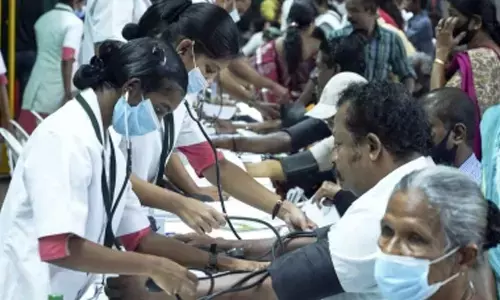Agri-tech poised for a big take-off

A Ministry of Electronics and Information Technology (MeitY) report highlighted that digital tech-based agriculture can unlock further value of $65 billion by 2025. The gross domestic product (GDP) impact of digital agriculture will be even larger. Drones are one such technology that is gaining prominence in the sector. Land mapping and agrochemical spraying are the most prominent use cases for drones in Indian agriculture. Other applications such as seeding, crop yield assessment and drone-based analytics hold significant potential. The early results have been promising
Aided by an indigenous supply chain, military-civil convergence, robust skilling and digital financing mechanisms, drones can help Indian livelihoods take a quantum leap. Indian agriculture is going through a transformative phase where it is expected to feed a growing population while coping with the challenges of climate change, geopolitical tensions and stressed natural resources.
The agriculture sector has been marred by long-term challenges such as sub-optimal yield, eroding soil health, lack of irrigation, inefficient use of inputs, lack of post-harvest management structure and access to formal financial services.
Emerging fourth industrial revolution technologies can play a role in addressing these challenges.
A Ministry of Electronics and Information Technology (MeitY) report highlighted that digital tech-based agriculture can unlock further value of $65 billion by 2025. The gross domestic product (GDP) impact of digital agriculture will be even larger. Drones are one such technology that is gaining prominence in the sector. Land mapping and agrochemical spraying are the most prominent use cases for drones in Indian agriculture. Other applications such as seeding, crop yield assessment and drone-based analytics hold significant potential.
The early results have been promising. Agrochemical spraying has the potential to be actively used, considering that it saves the cost of inputs by 25-90%, minimizes skin exposure by 90% while boosting crop yield.
Mapping is the second major use case with the potential to drive precision agriculture and reduce land disputes simultaneously. However, their implementation is still nascent, mainly undertaken by corporate farming institutions or big farmers.
The drone-related policy landscape for India has been eased significantly since August 2021, with enabling mechanisms like the Production Linked Incentive scheme (PLI) and import bans paving the way for the domestic manufacturing sector. However, for drones to be widely accepted as a viable mechanization option, enabling infrastructure needs to be strengthened over and above these policies.
It is expected that the drone and drone components industry will attract $50 billion of investment in the next few years. This flow of funds will be helpful to unlock the potential of the drone sector and make them ubiquitous for Indian agriculture. Civil-military convergence can provide cutting-edge technologies and a better scale for the emerging drone industry.
Skill development and digital finance will be foundational building blocks for the industry – creating new livelihoods and spurring entrepreneurship. These interventions need to be complemented by a robust local supply chain, standard operating procedures (SoPs) and government support especially in awareness building, safety standards and promoting drones as-a-service.
As drones emerge as a transformational innovation for the agriculture sector, there is a need to design and implement pilots at a smaller scale with clear indicators for outcome measurement, followed by rapid refinement and nationwide roll-out. If executed well, drones can help transform Indian agriculture and boost its GDP by 1-1.5%, create at least 500,000 new jobs and support the country in ushering in a new digital era of prosperity.
World Economic Forum (WEF), in its latest report, stated that drones have the potential to be the indicator of technology-led transformation of Indian agriculture.
India’s agriculture sector provides livelihood to 8% of families and ensures food security to 1.3 billion people. Indian agriculture is not just significant for the domestic market but it is also a key component of the global food supply chain.
Food security challenges are compounded by nutritional security, self-sufficiency, ecological problems, climate change and sharp inflation. The farm sector faces challenges, including fragmented landholdings; inefficient usage of agricultural inputs; poor availability of credit and financial inclusion; lack of market access and poor post-harvest infrastructure.
There are multiple uses for drones, including Pesticide and nutrient application; Mapping water spread area; Sampling water; Mapping macrophyte infestation; Aquaculture management practices
As per WEF, drone usage could reduce the cost of application by 20% and mitigate health hazards of manual work. It is also useful in promoting precision agriculture, thereby optimising input use. - Precision agriculture know-how and farm advisory services based on data sources can enable 15% increase in productivity.
The Agriculture Ministry provides grant up to Rs. 10 lakh to agricultural institutes for the purchase of drones. The need of the hour is to scale up drone use in the agriculture sector from the present 10,000 aerial vehicles. Civil-military engagement should be promoted to realise gains from cross-industry application of drones.
Consultations may be held with experienced strategic partners like Israel where AI-enabled drones are used for mapping plots, assessing crop damage, and even plucking only ripe apples.
















